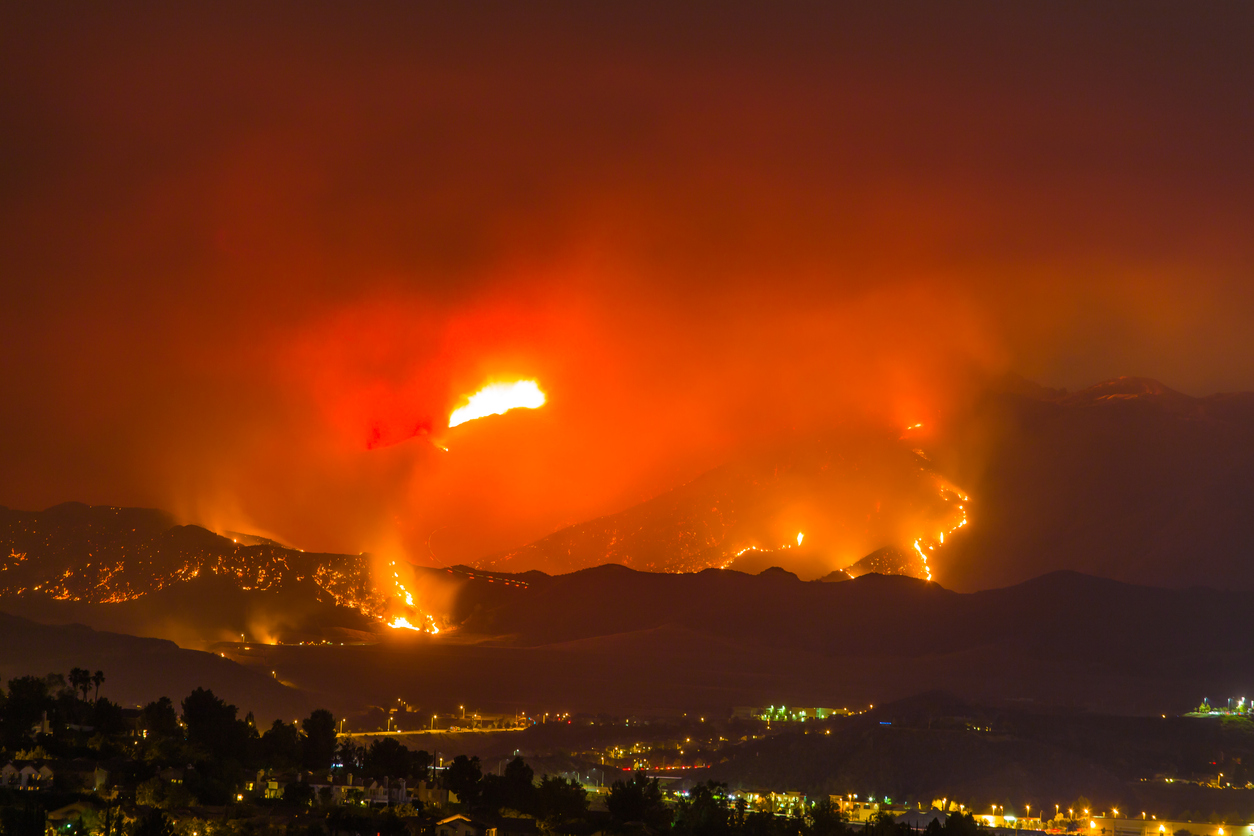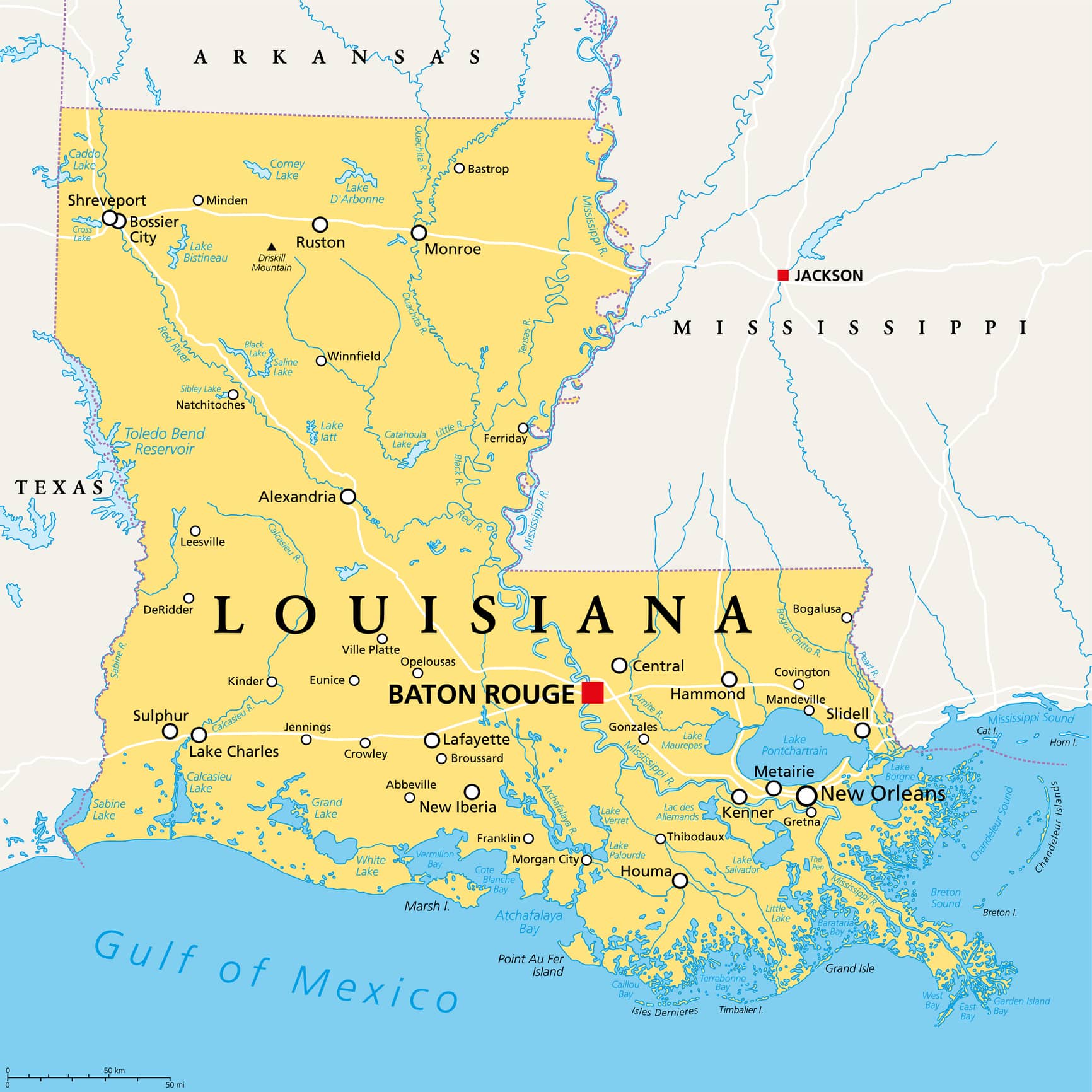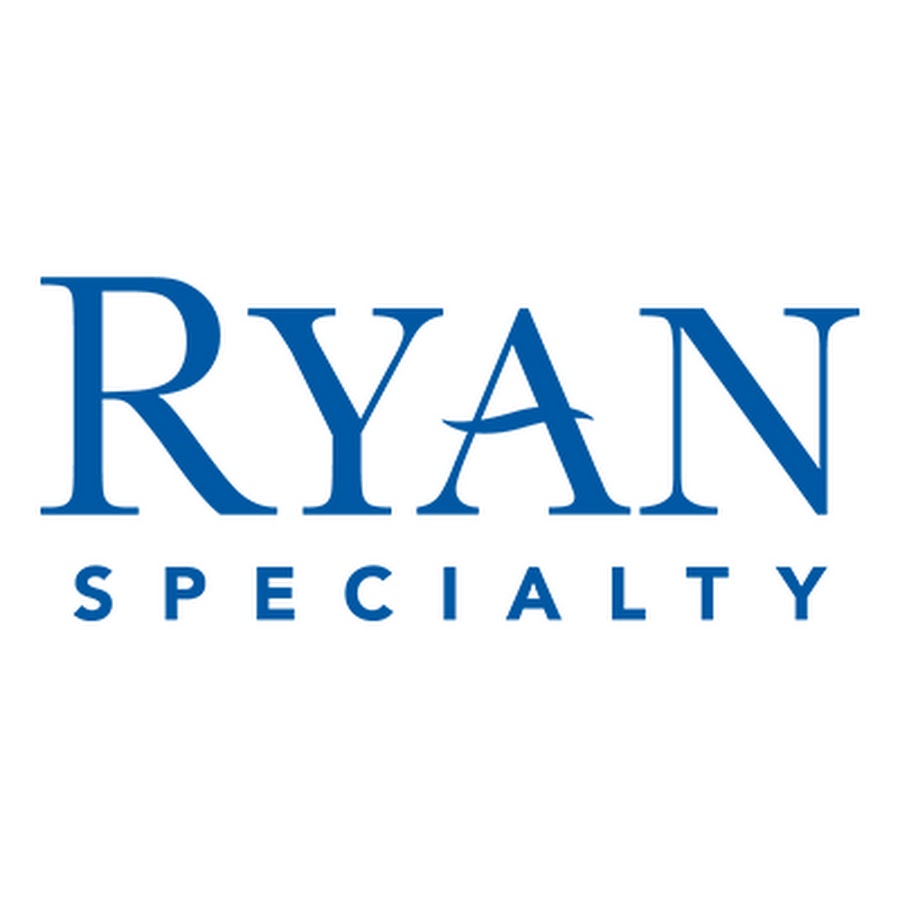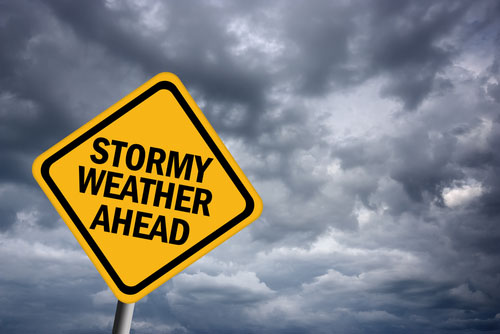May 1, 2024
BRP Group to Rebrand as The Baldwin Group
BRP Group, Inc. announced today that it will transition to a new firm-wide brand to best reflect the firm’s transformation, growth and integrated approach to delivering innovative client solutions.
Effective today, the firm’s brand name will be The Baldwin Group. In the coming months, the firm’s retail brokerage operations – with nearly 40 regional brands – will also transition to The Baldwin Group as the singular “go-to-market” brand delivering a broad range of business insurance, employee benefits, private client, and personal insurance advisory solutions. The firm’s retail brokerage operations includes the Insurance Advisory Solutions (IAS) and Mainstreet Insurance Solutions (MIS) operating segments.
The first phase of the firm’s rebranding efforts also includes the launch of the new website www.baldwin.com, Protecting the Possible℠ brand positioning, and other relevant content and marketing assets.
“I am very excited to announce that BRP is now The Baldwin Group. For us, The Baldwin Group is more than just a new name. It is truly indicative of who we are as a firm – a cohesive group of experts in business insurance, employee benefits, retirement planning, and all areas of private and personal insurance,” said Trevor Baldwin, Chief Executive Officer of The Baldwin Group.
“Our clients are constantly pursuing what’s possible for themselves, their families or their businesses; from renting their first apartment to taking a company public or expanding its operations internationally. ‘Protecting the Possible℠’ conveys the role our firm plays in safeguarding the ambitions and achievements of every stage of our clients’ personal and professional lives.”
“Our unified brand will enable us to efficiently and seamlessly deliver the broad range of specialized expertise we have built across the firm to meet our client’s personal and business insurance needs,” added Mr. Baldwin.
Since the firm’s founding in 2011, The Baldwin Group has grown revenue from approximately $5 million in 2011, to approximately $140 million in 2019, the year of the firm’s initial public offering, to more than $1.2 billion at year-end 2023. The firm has evolved from a local business to a regional one and now a nationwide platform serving more than two million clients in all 50 states and globally. With nearly 4,000 colleagues, the firm is consistently ranked a “Great Place to Work” by the likes of Fortune, Business Insurance and USA Today/Top Workplaces USA.
The firm will manage the brand transition in phases. Following today’s announcement of the move to The Baldwin Group, partner brands within the IAS and MIS operating segments will begin to transition later this summer. Brands within the firm’s Underwriting, Capacity, and Technology Solutions (UCTS) segment as well as Westwood Insurance Agency, will continue to maintain independent go-to-market brands. Additionally, effective May 2, 2024, BRP Group, Inc. will be renamed as The Baldwin Insurance Group, Inc., and Baldwin Risk Partners, LLC will be renamed as The Baldwin Insurance Group Holdings, LLC. The firm expects to complete its brand integration work in early 2025.
Read More
May 1, 2024
Self-driving Tractor-Trailers Heading for U.S. Roads
On a three-lane test track along the Monongahela River, an 18-wheel tractor-trailer rounded a curve. No one was on board.
A quarter-mile ahead, the truck's sensors spotted a trash can blocking one lane and a tire in another. In less than a second, it signaled, moved into the unobstructed lane and rumbled past the obstacles.
The self-driving semi, outfitted with 25 laser, radar and camera sensors, is owned by Pittsburgh-based Aurora Innovation Inc. Late this year, Aurora plans to start hauling freight on Interstate 45 between the Dallas and Houston areas with 20 driverless trucks.
Within three or four years, Aurora and its competitors expect to put thousands self-driving trucks on America's public freeways. The goal is for the trucks, which can run nearly around the clock without breaks, to speed the flow of goods, accelerating delivery times.
The companies say the autonomous trucks will save on fuel, too, because they don’t have to stop and will drive at more consistent speeds. Also, Aurora says its testing has shown that if a maintenance issue arises while one of its trucks is traveling on a freeway, the vehicle will automatically pull to the side of the road and remotely call for assistance.
The image of a fully loaded, 80,000-pound driverless truck weaving around cars on a super-highway at 65 mph or more may strike a note of terror. A poll conducted in January by AAA found that a decisive majority of American drivers — 66% — said they would fear riding in an autonomous vehicle.
But in less than nine months, a seven-year science experiment by Aurora will end, and driverless trucks will start carrying loads between terminals for FedEx, Uber Freight, Werner and other partners. Aurora and most of its rivals plan to start running freight routes in Texas, where snow and ice are generally rare.
For years, it seemed as though the initial venture for autonomous vehicles would be ride hailing in large cities. But General Motors’ Cruise robotaxi unit is struggling in the aftermath of a serious crash. And Alphabet’s Waymo faces opposition to expanding its autonomous ride service in California. The result is that self-driving trucks are poised to become the first computer-controlled vehicles deployed in widespread numbers on public roads.
The vehicles have drawn skepticism from safety advocates, who warn that with almost no federal regulation, it will be mainly up to the companies themselves to determine when the semis are safe enough to operate without humans on board. The critics complain that federal agencies, including the National Highway Traffic Safety Administration, take a generally passive approach to safety, typically acting only after crashes occur. And most states provide scant regulation.
But Aurora and other companies that are developing the systems argue that years of testing show that their trucks will actually be safer than human-driven ones. They note that the vehicles’ laser and radar sensors can “see” farther than human eyes can. The trucks never tire, as human drivers do. They never become distracted or impaired by alcohol or drugs.
“We want to be out there with thousands or tens of thousands of trucks on the road,” said Chris Urmson, Aurora’s CEO and formerly head of Google’s autonomous vehicle operations. “And to do that, we have to be safe. It’s the only way that the public will accept it. Frankly, it’s the only way our customers will accept it.”
Phil Koopman, a professor at Carnegie Mellon University who studies vehicle automation safety, said he agreed that self-driving trucks can theoretically be safer than human-driven ones — for the very reason that they lack drivers who might become distracted or impaired. But he cautioned that the vehicles’ computers inevitably will make errors. And just how the trucks will fare in real-world situations, he said, will depend on the quality of their safety engineering.
With billions of dollars in investments at stake, Koopman said, he wonders how the companies will balance safety decisions against cost concerns.
“Everything I see indicates they’re trying to do the right thing,” he said. “But the devil is in the details.”
On the test track, reporters saw Aurora’s semis avoid simulations of road obstacles, including pedestrians, a blown tire, even a horse. But the trucks were running at only 35 mph (56 kilometers per hour) in a controlled environment with nothing unexpected happening. (The trucks are being tested with human safety drivers on Texas freeways at speeds of 65 mph (105 kph) or higher.)
On the track, the trucks spotted obstacles more than a quarter-mile away and acted immediately to avoid them. Urmson said the trucks’ laser sensors can detect people walking on a highway at night, far beyond the distance of headlights.
Since 2021, Aurora trucks have autonomously hauled freight over 1 million miles on public highways — but with human safety drivers in the cabs. There have been only three crashes, Urmson said, all of them caused by mistakes by human drivers in other vehicles.
The crashes turned out to be minor, with no injuries. And in each case, the company said, the Aurora truck was able to safely pull to the side of the road.
A federal database that started in June 2021 shows at least 13 crashes with other vehicles involving autonomous semis, including three involving Aurora. In all the cases, the crashes were caused by other vehicles changing lanes or rear-ending the trucks. Sometimes, human safety drivers took over just before the crash.
Aurora won’t compromise safety, Urmson said, even if ensuring it might delay the timetable for achieving a profit.
“If we put a vehicle on the road that isn’t sufficiently safe — that we aren’t confident in the safety of — then it kills everything else,” he said.
Last month, when Urmson displayed the trucks to Wall Street analysts in Pittsburgh, he said the publicly held company expects to turn a profit by late 2027 or early 2028. To meet that goal, Aurora must succeed in putting thousands of the trucks on the roads, hauling freight from terminal to terminal and collecting a per-mile charge from customers.
The company’s competitors — Plus.ai, Gatik, Kodiak Robotics and others — also plan soon to put driverless trucks on the roads hauling freight for customers. Gatik expects it to happen this year or next; the others haven’t set timetables.
Don Burnette, CEO of Kodiak, said freeways are a better environment for autonomous vehicles than congested cities where ride-hailing robotaxis have been running. There are fewer pedestrians, and fewer unexpected things happen. Still, there are higher speeds and longer braking distances.
In testing on highways with human backup drivers, Burnette said, Kodiak has never experienced a crash in which its trucks were at fault.
“At the end of the day,” Burnette said, “these trucks should be much safer than human drivers.”
Almost every year in the United States, a tractor-trailer plows into traffic that is stopped because of road construction, often causing deaths and injuries. By contrast, Burnette said, autonomous trucks pay attention all the time and are always watching 360 degrees.
Perhaps so. But at a Buc-ee’s mega convenience store and gas station along Interstate 45 about 35 miles south of Dallas, the prospect of driverless semis struck a note of fear.
“It sounds like a disaster waiting to happen,” said Kent Franz, a high school basketball coach in Chandler, Oklahoma, who was traveling to Houston for a wedding. “I’ve heard of the driverless cars — Tesla, what have you — and the accidents they’ve been having. Eighteen-wheelers? Something that heavy, relying on technology that has proven it can be faulty? Doesn’t sound very comfortable to me.”
Patti Pierce, a retired accountant from Plano, Texas, said she would be OK with the technology — in about a decade.
“I don’t want to be on the road with them right now,” she said. “I like the gadgets in my car, but I’m not sure the technology is good enough right now to have a truck that drives itself.”
No federal regulations specifically cover autonomous vehicles, Koopman of Carnegie Mellon noted. Most states have no such regulations, either. Koopman said the automated-vehicle industry has persuaded many states to bar local governments from enacting such regulations. The result, he said, is that the public must trust the companies that are deploying autonomous semis.
The National Highway Traffic Safety Administration and the Federal Motor Carrier Safety Administration, both part of the federal Department of Transportation, lack authority to stop autonomous vehicles from going on the roads. If something goes wrong, though, they can require recalls or order trucks out of service.
“You can’t expect the government to protect you here,” Koopman said. “The company’s going to decide when they think they’re safe, and the only thing the regulator is going to do is judge them after the fact.”
For the past five years, the motor carrier administration has been preparing safety standards for trucks with automated driving systems. The standards will govern inspections, maintenance and the remote monitoring of the trucks. But it’s unclear when the rules will emerge from the regulatory process.
In the meantime, the autonomous semi companies say they can help address a truck driver shortage, estimated by the industry to amount to 64,000 drivers. Yet there also are worries that autonomous trucks eventually will supplant human drivers and cost them their livelihoods.
The Teamsters union, which represents about 600,000 drivers, most of them truckers, is pushing state legislatures to require human drivers to monitor the self-driving systems, contending that they are unsafe. A 2021 Transportation Department study concluded that the nationwide use of fully automated semis was years away, giving drivers time to transition to other transportation and logistics jobs that will be created.
Aurora’s Urmson said he thinks driverless semis will complement the work already done by human drivers, because many more goods will have to be moved for a growing population.
“If you’re driving a truck today,” he said, “my expectation is you’re going to be able to retire driving a truck.”
Read More
May 1, 2024
States Struggle to Keep Property Insurers from Fleeing as Wildfire Risk Grows
Months after a catastrophic fire burned more than 2,200 homes in Hawaii, some property owners are getting more bad news — their property insurance won’t be renewed because their insurance company has deemed the risk too high.
It’s a problem that has played out in states across the U.S. as climate change and increasing development has raised the risks of wildfires and other natural disasters damaging communities. Insurance providers, state regulators and researchers are grappling with how to keep the insurance companies in business while keeping residents and their properties insured and protected.
“I think most of the insurers, you know, I’m very grateful that they’re committed to the Hawaii market, so we haven’t seen wholesale withdrawals,” after the Aug. 8, 2023 fire burned through Lahaina and killed 101 people, Hawaii Insurance Commissioner Gordon Ito said during a Wildfire Risk Forum for insurance commissioners held at the National Interagency Fire Center in Boise, Idaho.
But one or two insurance companies have stopped renewing policies for wood structures like townhomes that are in wildfire risk areas, Ito said Monday, in part because the companies have seen their own insurance costs climb. Property insurers typically have their own insurance coverage to help when there are big payouts, like the roughly $3 billion in claims that have been paid so far on an estimated $6 billion in damages from the Lahaina fire. But those “reinsurance” rates are climbing, Ito said, and that’s forcing some companies to reevaluate the policies they are willing to issue to residents.
The same thing happened in Colorado after the 2021 Marshall Fire destroyed 1,100 homes in Boulder County, causing an estimated $2 billion in damage, said Colorado Division of Insurance deputy commissioner Jason Lapham. Last year, Colorado lawmakers authorized the creation of the Fair Access to Insurance Requirements (FAIR) Plan, which is expected to provide bare-bones property insurance coverage for residents who can’t get insurance from a private company starting in 2025. Other states like California, Louisiana and Florida have also resorted to providing their own state-affiliated “insurers of last resort,” which can fill in the gap when when the private insurance market abandons an area because of natural disaster risk.
Insurance industry researchers say part of the solution could come from homeowners taking steps to make their properties more fire-resistant.
“This peril is a preventable peril, and it will take a will to change and do something different,” said Anne Cope, the chief engineer for the Insurance Institute for Business & Home Safety. She later demonstrated her point by taking the commissioners to two nearly identical buildings — one made out of fire-resistant materials with plenty of space between landscaping and the structure, and the other built with traditional materials and landscaping. Small fires were started next to each building, and the fire-resistant one remained mostly undamaged while the traditional building was quickly engulfed and burned to the ground.
Research shows that protecting homes from blowing embers using fire-resistant roofs and gutters and keeping the area around a home free of easily flammable material makes a big difference, Cope said.
In the early 1970s, the U.S. had more annual fire deaths than any other industrialized nation, Cope told the insurance commissioners, but a 1973 government-commissioned report on the problem called “America Burning” led to dramatic improvements, in part because of the widespread adoption of smoke detectors and building codes.
“We can do that here with suburban conflagration,” Cope said, by protecting homes from blowing embers using fire-resistant roofs and gutters and taking other basic steps like keeping defensible space around a home. Wood roofing materials are not only more statistically likely to lead to the destruction of their own building in a fire but also to the destruction of 10 other buildings nearby, she said. Juniper bushes and wooden fences and decks near homes are also likely fire entry points, as are gutters that are filled with debris.
Once one building in a community catches fire, the problem quickly compounds — while forest fires and other wildland fires generally produce small blowing embers that are quickly extinguished, structure fires create much larger embers that can be as big as a human hand, Cope said. Those big, chunky embers carry enough fuel with them to keep burning once they land on another structure, quickly setting it aflame.
The economic effects of a catastrophic fire last for years, said Ito. Insurance companies in Hawaii have already paid roughly 80% of the claims filed for personal property, nearly 100% of the claims filed for motor vehicles and about half of the commercial insurance claims, he said. Commercial insurance claims typically take longer because additional records are needed to document the losses sustained by a business.
But that’s just the recoverable losses. The economy has been devastated by the lack of tax revenue, more than 2,000 displaced residents are still living in hotels, and rebuilding hasn’t started yet, Ito said. Lahaina was a major destination for visitors, and the fires will likely lead to an ongoing reduction of about 10% or 15% in revenue for the state’s tourism industry, he said.
“And to me, the heartbreaking thing … there’s quite a few Lahaina survivors that cannot afford to stay and have chosen to leave the islands because of the lack of housing availability,” said Ito. “And so that’s, I think, the biggest impact.”
Read More
May 1, 2024
Louisiana Commissioner: Legislators Approve Four Bills to Tackle Insurance Crisis
Louisiana Insurance Commissioner Tim Temple said a plan that tackles a property insurance crisis is moving forward after legislators approved four bills, including one eliminating rules largely prohibiting carriers from dropping policyholders who stayed with them at least three years.
Another bill tightens rate decision deadlines. A third adjusts claims payment periods and limits how penalties are paid for breach of duty. A fourth bill makes the Louisiana Fortify Homes Program permanent.
Temple called the passage of S.B. 323, S.B. 295, H.B. 611 and H.B. 120 a “bold first step in addressing the insurance crisis that most Louisianans have been facing for several years.
“These bills provide real, proven solutions to the problems that have been plaguing our market,” he said, including by insurers and reinsurers that have avoided an “increased investment in Louisiana for years."
Temple said he thinks the bills will create a competitive, stable, state insurance marketplace.
H.B. 611 phases in an end to the state's unique three-year rule, which prohibits a property carrier from nonrenewing a homeowners policyholder who is up to date on payments once the policyholder has been with the carrier for three years.
The bill cleared the state Senate in a 26-9 vote and was set for concurrence in the House on April 29.
H.B. 611 allows an insurer to file a plan with the commissioner to nonrenew up to 5% of policies statewide, as long as no more than 5% are in a single parish.
It also caps deductibles at 5% of a dwelling’s replacement cost value, unless the insured requests a higher amount. Previously deductibles in place more than three years were capped at the same amount throughout a policy’s life, with certain conditions such as timely premiums payments and limits on the number of claims within a set span of time.
S.B. 295, which changes some property/casualty and liability rate filing requirements, was nearly unanimously passed in the Senate in March and the House on April 24. Under the bill, rates and information submitted by carriers will be considered approved unless the commissioner notifies them otherwise within 30 days of receiving a filing.
Currently the department has more leeway on deciding if a rate filing is complete and starts a waiting period once an application is deemed sufficient to decide.
Also under S.B. 295, if a rate filing is determined to be inadequate or unfairly discriminatory, the commissioner may direct the insurer to collect additional premium or issue a refund for the difference.
A third bill, S.B. 323 addresses property/casualty and liability policy claims. It defines "catastrophic loss," "immovable property," and "residential property" and gives carriers 14 days from a notice of a non-catastrophic loss to start loss adjustments on property damage claims and claims for “reasonable” medical expenses.
Insurers have 30 days to start the process after a catastrophe, but that span can be extended by state officials when necessary. They have 60 or more days to pay a catastrophic loss on a residential property or 90 days or more on immovable property, after receiving satisfactory proof of loss.
S.B. 323 also delineates penalties for non-compliance. It protects the Louisiana Insurance Guaranty Association and Louisiana Citizens Property Insurance Corp. from a class action related to claims and the Guaranty Association from special damages or penalties.
The bill subjects property damage insurance claims to a two year liberative prescription period.
H.B. 120 makes the state Fortify Homes Program permanent but doesn’t identify a funding source, according to an attached note by the Legislative Fiscal Office.
The office anticipates the program will award grants totaling $25 million this year to 2,500 homeowners who upgrade to Fortified Roof standards. It recommends $5 million for the program for the 2025 fiscal year. “Future resources will be subject to legislative appropriation or action,” it said.
The program opened its first round of grants in October for property owners hardening homes against severe storms by repairing or replacing roofs to Insurance Institute for Business & Home Safety standards. Half of the grants were for Citizens policyholders.
The state created the program after seeing its success in Alabama, where thousands of homes have been hardened against hurricanes and tornadoes. The $30 million approved for the fortify program in Louisiana in 2023 was a 50% increase over the amount then-Insurance Commissioner Jim Donelon discussed when planning for the legislative session.
The top five writers of homeowners multiperil insurance in Louisiana in 2022, based on direct premiums written, were: State Farm Group, with 24.76% of market share; Allstate Insurance Group, 14.45%; Liberty Mutual Insurance Cos., 7.69%; USAA Group, 7.23%; and Louisiana Farm Bureau Mutual Insurance Co., 4.72%, according to BestLink.
Read More
May 1, 2024
Ryan Specialty Completes Acquisition of Castel Underwriting Agencies
Ryan Specialty, a leading international specialty insurance firm, is pleased to announce that it has completed the acquisition of Castel Underwriting Agencies Limited ("Castel"), a Managing General Underwriting (MGU) platform, from Arch Financial Holdings (UK) Limited and minority shareholders. Castel is headquartered in London, England with additional offices in the Netherlands, Belgium and Singapore. The previous announcement dated December 21, 2023 regarding the signing of the definitive agreement can be found
here.
Commenting on the acquisition of Castel, Miles Wuller, President and CEO of Ryan Specialty Underwriting Managers, remarked, "We are excited to have the exceptional underwriting talent and executive leadership at Castel join the Ryan Specialty family. Castel brings new products and facilities that expand our offerings to our clients and trading partners. Effective immediately, we are pleased to announce the enhanced leadership team for Ryan Specialty Underwriting Managers International:
- Mark Birrell, Chairman and CEO (most recently CEO of Castel)
- Carin Verhagen, General Counsel (in addition to her responsibilities as General Counsel at Ryan Specialty International)
- Roland Hill, Chief Operating Officer (most recently CFO of Castel)
This leadership team will help accelerate our de novo formations within this region. We are very much looking forward to working with this incredible team."
About Ryan Specialty
Founded in 2010, Ryan Specialty is a service provider of specialty products and solutions for insurance brokers, agents and carriers. Ryan Specialty provides distribution, underwriting, product development, administration and risk management services by acting as a wholesale broker and a managing underwriter with delegated authority from insurance carriers. Ryan Specialty’s mission is to provide industry-leading innovative specialty insurance solutions for insurance brokers, agents and carriers. ryanspecialty.com
April 30, 2024
Aon Estimates Q1 Global Insured Catastrophe Losses of at Least $17B
Broking giant Aon has estimated that global insured catastrophe losses amounted to at least $17 billion in the first-quarter of 2024, which was slightly above average by its measure.
The $17 billion of losses for the global insurance and reinsurance industry came off the back of an economic toll of above $45 billion, which was slightly below the 21st Century Q1 cat loss average of $59 billion.
Aon reports that the most expensive event of the first three months, in economic terms, was the Noto Earthquake in Japan, which drove economic losses of $17.6 billion, according to governmental estimates.
Aon puts that Noto earthquake loss, on an insured basis, at just $1 billion although likely to rise somewhat and exceed that figure once all claims are accounted for, with a significant protection gap therefore evident.
Out of the $17 billion of insured catastrophe losses, once again it is US severe convective storms (SCS) that drove the majority.
The top two insured loss events were US severe convective storms, with an outbreak in January costing $2.2 billion and a March outbreak $3.5 billion, Aon estimates.
Other drives of insurance and reinsurance market losses from natural catastrophes in the first-quarter of 2024, were US winter storms, as well as windstorms and flooding in Europe.
Aon cautions that all estimates are likely to continue evolving and as we all know that likely means some creep higher.
The gap between economic and insured losses for Q1 2024 was 64%, Aon reports, with the US and European events seeing much more insurance coverage than the quake in Japan.
Aon notes that while currently it estimates there were four billion dollar insured catastrophe loss events in Q1 2024, the broker notes that additional events may cross that threshold as loss quantum continue to be counted as claims settle.
The estimate from Aon of $17 billion in insured catastrophe losses for Q1, can be compared to one from Gallagher Re, with that reinsurance broker estimating that industry losses from natural catastrophes were 10% higher than the most recent 10-year average at $20 billion for the period.
Read More
April 30, 2024
Q1 2024 Sets Record for Most Ransomware Attacks in a First Quarter: Corvus
As per a new report from Corvus Insurance, Q1 2024 has set a record for the most global ransomware attacks in a first quarter.
According to the data in Corvus’ Q1 2024 Ransomware Report, 1,075 leak site ransomware victims were posted on leak sites during the first quarter, despite the disruption of two major ransomware groups, LockBit and ALPHV/BlackCat, which accounted for 22% and 8% of the activity, respectively.
Corvus explained that this is likely due to other ransomware affiliate groups shifting operations to new and alternative organizations.
“18 new leak sites emerged over Q1, the largest number of leak sites to emerge in a single quarter on record. These additions brought the total number of active leak sites for the first quarter to 60,” the firm said.
Corvus revealed at the start of this year that global ransomware attacks in 2023 set a record high, surpassing 2022 by close to 70%. The firm has now warned that 2024 is picking up right where 2023 left off.
The industries most impacted by global ransomware attacks remained relatively consistent over previous quarters, with Information Technology and Services, Construction, Healthcare, and Legal continuing to rank among the top five.
Jason Rebholz, Chief Information Security Officer, Corvus Insurance, commented, “The ransomware activity we’ve seen in the first quarter of 2024 continues the substantial growth pattern that we saw develop over the course of 2023.
“While we fully expect that law enforcement’s long-term impact will be significant, it’s not enough to curb this criminal activity today.
“Businesses across all industries must embrace vigilant cybersecurity practices, including proactive and persistent patch management of any vulnerable assets in their environment.”
Read More
April 30, 2024
Omaha National Acquires California Domiciled Insurance Company
Omaha National Group Inc., a leading tech-enabled provider of workers’ compensation insurance, has acquired Sutter Insurance Company, a California domiciled insurance carrier that has been renamed Omaha National Casualty Company. Omaha National also owns Omaha National Insurance Company, which is domiciled in Nebraska.
“We enjoy excellent relationships with our fronting partners but writing on our own paper immediately enhances our financial results and allows us to better serve our policyholders and broker partners.”
“The acquisition of a carrier licensed in California, which is our largest market, is a major step forward in operating as a national full-stack carrier,” CEO Reagan Pufall said. “Since inception, our plan has been to combine strong growth with exceptional financial results and that’s what we’ve achieved. We’re approaching $200 million in-force premium while at the same time our loss ratio, including allocated loss adjustment expenses, has been below 60% every year we’ve been in operation.”
“We are now licensed to issue policies in 37 states and continue to expand toward nationwide coverage,” Omaha National General Counsel Jim Hempel said. “We enjoy excellent relationships with our fronting partners but writing on our own paper immediately enhances our financial results and allows us to better serve our policyholders and broker partners.”
In another milestone, Omaha National is now implementing Oncore Underwriting, the company’s proprietary underwriting and policy management application. “One of our core strategic principles is that we design and develop our own operational software entirely in-house,” said Bryan Connolly, Omaha National’s Chief Operating Officer. “When we implemented Oncore Claims in 2021 it generated remarkable improvements in our claims results, and we expect Oncore Underwriting to have a similarly profound impact. When Oncore CRM is implemented in 2025 all key functions within the company will be performed within a single proprietary application.”
About Omaha National
Omaha National serves the companies that build America and keep it running; employers that are in industries where people work with their hands and have a greater risk of being injured. Our proprietary software application, Oncore, empowers our employees to better serve our customers and their injured workers while generating exceptional underwriting results. Omaha National offers AM Best A- (Excellent) rated workers’ compensation coverage through more than 2,500 agencies. Since our marketing launch in 2017, the company has grown to more than 250 employees and is approaching $200 million of in-force premium.
April 30, 2024
Investors Are Increasingly Interested in a Novel Type of Weather Insurance
Interest in startups trying to shake up the insurance industry is on the rise as weather catastrophes worsen. The latest sign: New York-based Arbol has raised $60 million in a Series B funding round.
Founded in 2018, Arbol specializes in a niche but fast-growing form of indemnity known as “parametric insurance.” Unlike traditional insurance products that link a claim with actual losses, payouts are triggered by a predetermined parameter.
For instance, farmers and the insurer could agree that 3 inches of rain falling in an hour is the threshold that would lead to payouts. The simplified claim process enables farmers to restart crop planting straightaway, rather than waiting for weeks or longer for a loss assessment.
The challenge for insurers is creating models that price weather perils accurately. Arbol leverages artificial intelligence technology to process large amounts of climate data and simulate interactions between different weather factors, says Siddhartha Jha, the startup’s founder and chief executive officer.
A former commodities trading strategist at Citadel, Jha has also used his Wall Street background to design a diverse product portfolio, primarily underwriting six climate-related risks including temperatures, soil moisture and solar radiation, and operating in more than 15 countries mostly in Europe and North America. That diversity, according to Jha, reduces the company’s risk exposure while improving profitability.
That strategy seems to be working. While Arbol’s business centers on insuring against weather perils, which have grown in frequency and severity under a changing climate, Jha says that the six-year-old startup is profitable.
Arbol transacted $250 million in gross written premiums last year, up from $2 million in 2020 when it began offering parametric insurance services, according to the company.
The investment, announced Tuesday and co-led by London-based Giant Ventures and the venture capital arm of French financial powerhouse BNP Paribas, came after Arbol booked a nearly 50% increase in revenue in 2023 from a year ago. Other investors in the new round include Mubadala Capital, a sovereign wealth fund backed by the government of Abu Dhabi.
The fundraising announcement is the latest in a growing list of investments in the parametric insurance sector. In 2022, French insurer Descartes Underwriting completed a fundraising round of $120 million, while Puerto Rico-based Raincoat also raised millions of dollars from venture investors. Floodbase, a New York public benefit corporation, is also working on a pilot of its parametric insurance product in Africa.
“The world is starting to wake up to climate coverage gaps” in insurance, Jha says. “That is going to start becoming a big focus.”
While agricultural businesses, energy infrastructure operators and reinsurance clients — that is, insurers who buy protection from other insurers to hedge their risk — currently make up the lion’s share of Arbol’s user base, Jha says that the fresh funding will help the startup make a foray into other markets. Earlier this month, Arbol launched a subsidiary that began offering home insurance for coastal communities in the US, where state-backed “insurers of last resort” are taking on trillions of dollars in risk.
As economic damages from natural catastrophes mount, more insurance companies have pulled out of high-risk areas such as California and Florida. The remaining insurers are raising rates in response to rising climate-induced threats. A recent analysis predicts that the average premium for homeowner insurance in Florida will approach $12,000 by the end of 2024, while the national average is on course to hit a record high of $2,522, following a roughly 20% increase over the past two years.
While parametric insurance has limitations — when a weather peril doesn’t cross the trigger point, for instance, policyholders won’t receive payouts even if damages occurred — the product is gaining traction as businesses scramble to protect themselves from the increasingly severe impacts of climate change. Data from Allied Market Research shows that globally, parametric insurance grew into a nearly $12 billion business in 2021 and is expected to more than double its size by 2031.
Read More
April 30, 2024
Beazley Wary of Social Inflation Effect While Cyber Premiums Sag
Beazley plc saw lower first-quarter premiums in cyber as the group implements its excess and surplus operation and remains wary of lines affected by social inflation.
The group anticipates growth in cyber going forward while also looking to growth in marine, aviation and political risk amid uncertain conditions, said Chief Executive Officer Adrian Cox in a conference call.
First-quarter insurance written premiums rose to $1.48 billion from $1.38 billion a year ago, as the group completed the last phase of its quota share reinsurance spend, Cox said. Net insurance written premiums rose 11% to $1.24 billion.
IWP in the quarter fell 10% for cyberrisks as rates fell 5%, the company said in a statement.
Cox said the lower cyber premiums are due in part to higher premiums a year ago and more partnership business since then. He added Beazley is working with its distribution partners worldwide to grow the cyber business and anticipates moderate growth in the line going forward.
The company continues to focus on cyber business in Europe but is seeing more competition there, he said.
Premiums rose 26% for property risks and 11% for digital risks while remaining flat for marine, aviation and political risks. Investment income rose to $126 million from $104 million, keeping the group on target for the year.
For 2024, Beazley is anticipating premium growth in the high single digits and rate increases in the low single digits, Cox said.
The combined ratio guidance for the year remains in the low 80s on an undiscounted basis.
On the claims side, Cox said nothing has happened that would prompt changes in guidance for the year.
In the marine, aviation and political risk segment, Cox said the geopolitical environment continues to drive demand and the group remains confident about the long-term growth prospects.
As Beazley moved its MAP business away from the Lloyd's platform, it resulted in the flat numbers on the group level, Cox said. Rising political uncertainty and better economic prospects give Beazley confidence in the growth prospects for MAP, he said.
Beazley launched a new excess and surplus carrier on Jan. 1 and have been writing business on this platform as planned, Cox said.
Following this, the mix of business within the group changes slightly this year as it retains a higher proportion of property business, and a smaller proportion on MAP, as this now cedes to third-party capital at a higher rate. Overall, group premium levels remain the same.
The group continues to see opportunities for property risks as business increasingly moves into the E&S market following the change in its strategy toward third-party capital, Cox said. "We are well-placed to take advantage of this as demonstrated by 26% growth in the first quarter."
Rate changes in property continue to be good, particularly in North America, he said. Cox noted Beazley will have a clearer view of the property business at half-year results when U.S. contracts are renewed.
In specialty risks, the directors and officers market remains competitive and Beazley continues to derisk that line while growing in smaller, niche areas that have lower exposure to social inflation, such as environmental cover outside the United States, Cox said.
Beazley is derisking its D&O book and is bearish on some general liability, excess casualty and automobile areas that are exposed to social inflation, he said. Lines that look good within specialty include mergers and acquisitions, environmental and non-U.S. areas.
Ki, Brit Ltd.'s digital Lloyd’s platform, recently said Beazley plc's Syndicate 2623/623 will offer additional follow capacity through its digital platform beginning April 2. The capacity through the partnership with Beazley will be available across Ki’s open market classes of business in the property, casualty and specialty divisions, allowing more efficiency for brokers to complete placements in Lloyd’s, Ki said at the time.
Lloyd's and underwriting entities of Beazley plc have current Best's Financial Strength Ratings of A (Excellent).
April 29, 2024
Kaiser Notifies Millions of Its Members of a Privacy Data Breach
About 13.4 million current and former Kaiser Permanente members and patients were potentially impacted by a privacy breach, the health care provider said.
Kaiser says it's alerting past and present customers and the health organization wasn't aware of any misuse of members or patients' information.
The data possibly collected included IP addresses, members' names and how members navigated on Kaiser's website or mobile apps due to code embedded on those sites.
A cyber expert told ABC7 that this case is more of a privacy breach than a data one, in which criminals break into a system to steal and sell personal information.
"In the case of a privacy breach, which this seems to be, it's an instance where Kaiser shared personal data with other organizations, in this case, potentially Twitter/X, potentially Google, potentially Microsoft," said Dr. Clifford Neuman, Director of USC Center for Computer Systems Security.
In a statement to Eyewitness News, Kaiser Permanente said in part:
"No usernames, passwords, Social Security numbers, financial account information, or credit card numbers were included in the transmission to these third parties. Kaiser Permanente conducted a voluntary internal investigation into the use of these online technologies, and subsequently removed them from the websites and mobile applications."
The organization apologized to its members, letting them know that they have taken safeguards and other measures to help guard against a reoccurrence of this issue.
Read More
April 29, 2024
Allstate Could Resume Issuing New Home Insurance Policies in CA
Allstate, one of California's biggest home insurers, could resume writing new homeowner policies if the department of insurance approves rule changes.
The company stopped writing new homeowner policies in late 2022 because of wildfire risk and the cost of rebuilding homes.
Lenny Higgins of Santa Rosa lost his home in Coffey Park in the Tubbs Fire.
Higgins had been living there for 14 years when the wildfire destroyed his neighborhood.
"It wiped out Coffey Park. Everything was incinerated," said Higgins.
Higgins rebuilt his home with help from insurance.
However, some homeowners and business owners in California have struggled to find coverage because companies have stopped writing new homeowner policies.
In March, state farm announced it would not renew 72,000 property owner policies in California.
Three insurers covering 40% of California homes have either paused new policies or set strict caps.
"They have reduced all of us down to a number -- a risk. It's getting easier for them to pick and choose the customers they want and don't want," said Amy Bach, a consumer advocate and executive director of United Policyholders.
Now, Allstate says it could start issuing homeowner policies again, if the state of California implements some changes.
Insurance companies want to be allowed to use computer programs to estimate future risks when seeking price increases.
Representative's claim that will allow them to plan for threats based on climate change.
Allstate issued a statement saying:
"We're working with the California Department of Insurance to improve insurance availability in the state. Once home insurance rates fully reflect the cost of providing protection to consumers, we'll be able to offer home insurance policies to more Californians with timely rate approvals, the use of our advanced wildfire modeling and reinsurance costs. We continue to offer auto insurance policies through allstate.com and local agents."
Higgins thinks it could be a good idea.
'If they are doing something that will allow people to stay on the books," said Higgins.
"If insurers get what they want, the ability to basically use a fancy crystal ball, look ahead a little bit and guess what is going to happen in the future, as opposed to go on what has already happened, what we know has happened, then we want to make sure we are keeping an eye on their assumptions," said Bach.
Consumer Watchdog Harvey Rosenfield doesn't believe the regulation changes by Allstate and other companies will benefit homeowners.
"If Allstate and other companies for the first time in California, are permitted to use computer models that are secret - that are black box models that cannot be assessed by the public... If this proposal goes into the effect people's rates will go through the roof," said Rosenfield.
We asked the California Department of Insurance about that claim. It issued a statement saying:
"California is battling a 21st century insurance crisis with 20th century rules. With climate change affecting every aspect of our lives, just relying on what we did in the past won't improve insurance choices for homeowners and businesses. California's insurance crisis is decades in the making and we are staying on track to implement all changes this year so insurance companies start writing more policies in all areas. We are balancing the urgent needs of homeowners with a need for transparency. We will review all public comments as we move forward with bringing companies back to California.
"Our goal is to safeguard the integrity of the insurance market to benefit consumers. Not kowtow to the whims of entrenched interests that have secretly benefited from a dysfunctional marketplace for decades. Availability is the first step toward affordability. We will continue moving forward to benefit, consumers, homeowners and business owners."
Meanwhile, Congressmen Mike Thomas and Jared Huffman on Thursday addressed the state's growing property insurance crisis.
They talked about new federal legislation designed to support homeowners dealing with wildfires and other risks.
Read More























